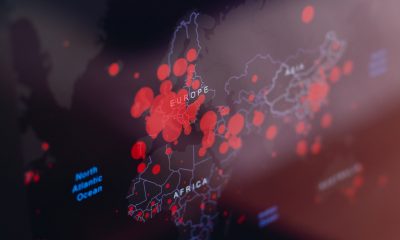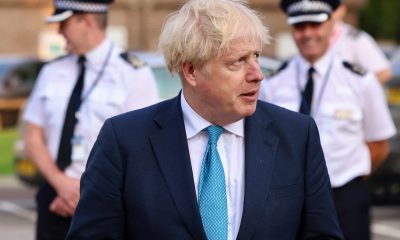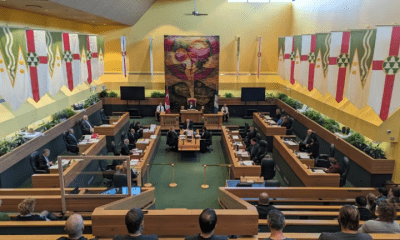Canada News
The Tories: Conservative Party 101

Prime Minister Stephen Harper recently launched consultations with businesses on the Canada Job Grant.
THE Conservative Party of Canada evolved with the merger of Canadian Alliance (formerly Reform Party of Canada) and Progressive Conservative Party of Canada (Tories). The merger was an effort to unite a right political front against the then-dominant Liberal Party. The merger was accomplished in 2003, but came to power only in 2006, as a minority government. It was only in 2011 that it became a majority government for the first time.
Former Reform Party leader and current Prime Minister Stephen Harper is the undisputed party leader. Harper’s personal stand on issues and policies is considered the same stand of the party as a whole.
Policies
- War Involvement: All 110 Conservative Party MPs, “conscientious objectors“ to “wars not sanctioned by the United Nations“ voted, on 3 June 2008, not to give a special “program” on this issue in the Parliament of Canada.
- China ties: Consistent in all recent Canadian government policies are strong ties with China. In 2013, the Conservative administration approved the acquisition of Nexen by a Chinese firm. It also advanced, as of 2013, the FIPA agreement, containing guarantees that Chinese buyers would have the legal right to sue.
- Government reforms: The Conservative Party supports reform of the Senate to make it “elected, equal, and effective.”
- Transparency and accountability: The Harper government policy is scathing conservative practices, sometimes even being described as the “sharpest thorn in Harper’s side”.
- Domestic issues: In its founding documents, the Conservative Party avowed principles of lower taxes, smaller government, decentralization of federal government powers to the provinces, and conservation of traditional religious and cultural values.
- Abortion: Party leader Stephen Harper declared that, “As long as I’m Prime Minister we are not reopening the Abortion Debate.”
- Same-sex marriage: Harper has repeatedly stated that his government will not attempt to ban same-sex marriage in Canada. Same sex marriage was recognized nationwide in Canada since 2005 with the Civil Marriage Act.
Historically, the original Conservative Party traces its roots to the first Canadian national government under Prime Minister MacDonald in 1867. It is strongly identified with the British Empire, and favored a government system patterned after that of Great Britain that promoted trade protectionism.
This was opposed to the Liberal Party’s nationalistic policies and free trade reciprocity with United States. But in 1942, in an effort to broaden its base after decades of decline in popularity, the Conservative Party (Tories) was forced to merge with The Progressive Party of John Bracken to form the Progressive Conservative Party of Canada. Bracken eventually became Prime Minister. As a result of this, many conservative economic policies where reversed, such as the signing of the Canada-United States Free Trade Agreement of 1989. In spite of these changes, the party still pursued independent foreign policies, like a strong stand against the abuses of the State of Israel, accepting refugees from foreign regimes sanctioned by USA and its allies. This was against the policies of then US President Ronald Reagan and Britain Prime Minister Margaret Thatcher.
From 1993 to 2004, there was in-fighting between the Progressive Conservative Party and an upcoming conservative party—The Reform Party. The Reform Party advocated reforms on traditional conservative policies. This division resulted in three consecutive Liberal Party majority governments, from 1993 to 2006. Thus, to remedy this, the Progressive Conservative Party and Canadian Alliance (former Reform Party) agreed to merge to form the present Conservative Party. Prime Minister Harper, leader of the Reform Party, became the undisputed leader of the merger since then.
On January 23, 2006, the Conservatives won 124 seats over Liberal Party’s 103 seats of the 308-member of House of Commons. This enabled the Conservatives to form a minority government, with Harper as Prime Minister up to the present.





















